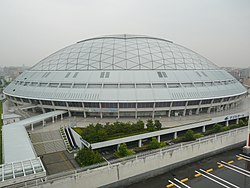
The City of Arts and Sciences is a cultural and architectural complex in the city of Valencia, Spain. It is the most important modern tourist destination in the city of Valencia and one of the 12 Treasures of Spain.
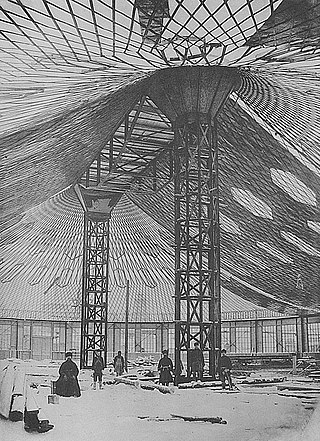
In structural engineering, a tensile structure is a construction of elements carrying only tension and no compression or bending. The term tensile should not be confused with tensegrity, which is a structural form with both tension and compression elements. Tensile structures are the most common type of thin-shell structures.

The Pylons of Cádiz, also known as the Towers of Cádiz, are two 158 m (518 ft)-tall pylons supporting a double-circuit 132 kV three-phase AC powerline over the bay of Cádiz, Spain, running from Puerto Real Substation to the substation of the former Cádiz Thermal Power Station, situated on the peninsula upon which the city of Cádiz stands.
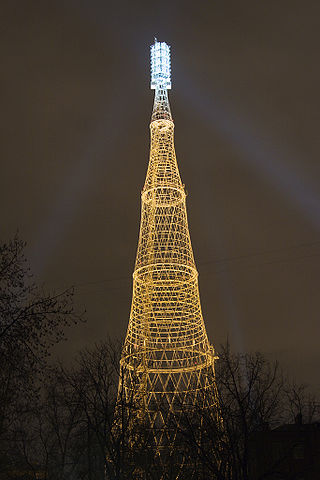
The Shukhov Radio Tower, also known as the Shabolovka Tower, is a broadcasting tower deriving from the Russian avant-garde in Moscow designed by Vladimir Shukhov. The 160-metre-high (520 ft) free-standing steel diagrid structure was built between 1920 and 1922, during the Russian Civil War.

An inclined tower is a tower that was intentionally built at an incline. Towers are built with an incline in order to support the weight of another structure, such as the Montreal Tower. Some towers are built with an incline due to the steep terrain upon which they stand, or simply for aesthetics.
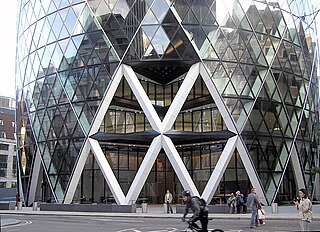
A diagrid is a framework of diagonally intersecting metal, concrete, or wooden beams that is used in the construction of buildings and roofs. It requires less structural steel than a conventional steel frame. Hearst Tower in New York City, designed by Norman Foster, uses 21 percent less steel than a standard design. The diagrid obviates the need for columns and can be used to make large column-free expanses of roofing. Another iconic building designed by Foster, 30 St Mary Axe, in London, UK, known as "The Gherkin", also uses the diagrid system.

The Weald and Downland Living Museum is an open-air museum in Singleton, West Sussex. The museum is a registered charity.
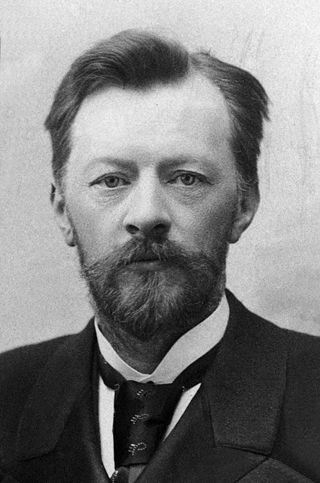
Vladimir Grigoryevich Shukhov was a Russian and Soviet engineer-polymath, scientist and architect renowned for his pioneering works on new methods of analysis for structural engineering that led to breakthroughs in industrial design of the world's first hyperboloid structures, diagrid shell structures, tensile structures, gridshell structures, oil reservoirs, pipelines, boilers, ships and barges. He is also the inventor of the first cracking method.

Hyperboloid structures are architectural structures designed using a hyperboloid in one sheet. Often these are tall structures, such as towers, where the hyperboloid geometry's structural strength is used to support an object high above the ground. Hyperboloid geometry is often used for decorative effect as well as structural economy. The first hyperboloid structures were built by Russian engineer Vladimir Shukhov (1853–1939), including the Shukhov Tower in Polibino, Dankovsky District, Lipetsk Oblast, Russia.

The Shukhov Tower on the Oka River is the world’s only diagrid hyperboloid transmission tower. It is located in Russia, in the western suburbs of Nizhny Novgorod, on the left bank of the Oka River near Dzerzhinsk. The tower is one of several structures designed by Russian engineer and scientist Vladimir Shukhov; its power lines, however, were decommissioned in 1989.

An unfinished building is a building where construction work was abandoned or on-hold at some stage or only exists as a design. It may also refer to buildings that are currently being built, particularly those that have been delayed or at which construction work progresses extremely slowly.
Buro Happold Limited is a British professional services firm that provides engineering consultancy, design, planning, project management, and consulting services for buildings, infrastructure, and the environment. It was founded in Bath, Somerset, in 1976 by Sir Edmund Happold when he took up a post at the University of Bath as Professor of Architecture and Engineering Design.
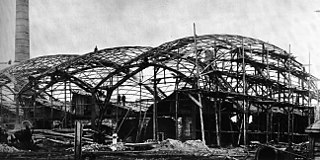
A gridshell is a structure which derives its strength from its double curvature, but is constructed of a grid or lattice.
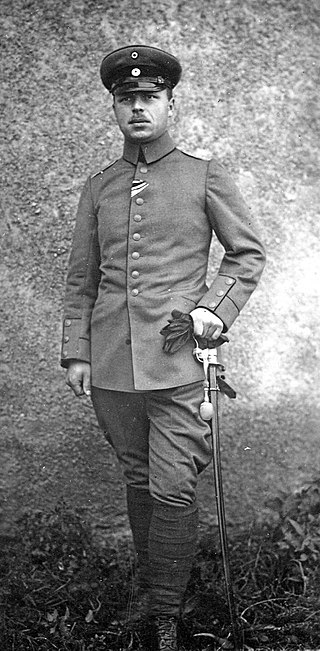
Franz Dischinger was a pioneering German civil and structural engineer, responsible for the development of the modern cable-stayed bridge. He was also a pioneer of the use of prestressed concrete, patenting the technique of external prestressing in 1934.
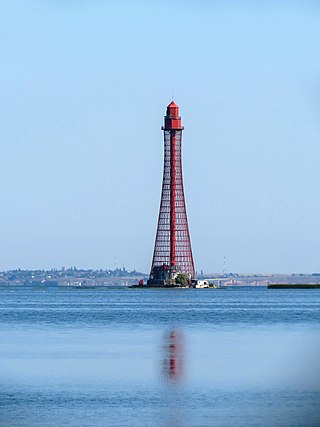
The Adziogol Lighthouse, also known as Stanislav–Adzhyhol Lighthouse or Stanislav Range Rear light, is one of two vertical lattice hyperboloid structures of steel bars, serving as active lighthouses in Dnieper Estuary, Ukraine. It is located about 30 km (19 mi) west of the city of Kherson. At a height of 211 feet (64 m), it is the sixteenth-tallest "traditional lighthouse" in the world as well as the tallest in Ukraine.

Shukhov Rotunda was a round exhibition pavilion built for All-Russia Exhibition 1896 in Nizhny Novgorod, Russia. It was built in 1896 with a diagrid hanging cover and was the world's first Hyperboloid structure. It is named after Vladimir Shukhov, who designed it in 1895.
The year 2019 in architecture involved some significant architectural events and new buildings.

Christopher John Kenneth Williams is a British structural engineer and researcher who has specialised in the relationship between geometry and structural action. He works on a range of building types including thin-shell structures, gridshells and tension structures, as well as bridges and towers.

